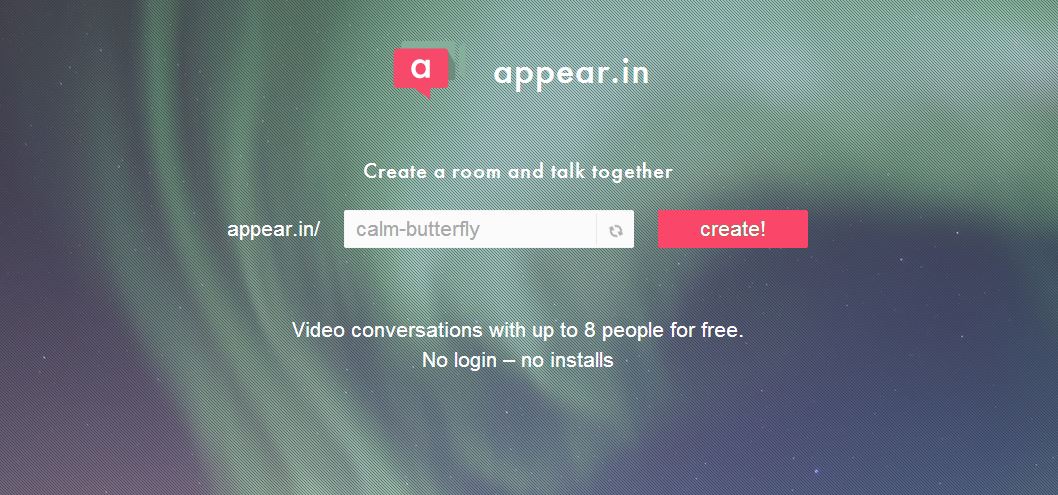In this week’s column, I share the fruit of a discussion I had this past week with Svein Willassen, founder and CTO of WebRTC-based video conferencing service appear.in.

CF: Hello Svein, and thank you for taking the time today to speak with me. Jumping right in, can you explain the relationship of appear.in to Telenor Digital?
SW: Telenor Digital operates an incubator for service development. appear.in is one of the services developed and operated in the incubator. We operate more or less as a startup with full freedom to innovate, implement and operate the service. The relationship is similar to the relationship between a startup and its investors and that is also how we view it.
appear.in came up as an idea in this environment just before summer last year. Some of us had experienced all the troubles of setting up corporate video conferences and were also aware of the developments on WebRTC. We saw the potential for greatly simplifying the process of setting up a video conference by having video conference rooms represented by a URL that can simply be shared for access to the room. The incubator environment allowed us to simply start executing on this idea. We did this by hiring three student interns, and they made the first version of appear.in that was released in August 2013.
CF: When I visit your site, Svein, two things immediately hit me. The first is the clean look and the ad-hoc nature of your conferencing solution. Who are the customers you looking to attract, and under what circumstances?
SW: We are targeting the service toward anyone who is fed up with the complexity involved in setting up existing video conferencing solutions and who needs something simple that anyone can use without having to download and install applications or plugins, create accounts and exchange contact details.
Whilst people use our service for a lot of different use cases, there are two that stand out in particular in terms of usage volume:
People find it to be a hassle to use existing solutions such as Skype and/or Hangouts for such meetings because it requires everyone to download and install the same software and exchange contact details.
- External business meetings.
When users belong to different businesses they will have different internal video conferencing solutions, which is a hassle to get to interoperate. Also in this case, it is a hassle to get everyone to download and install the same software and exchange contact details.
CF: Not long ago you were quoted regarding an implementation for the Red Cross. Can you elaborate on that?
SW: The Norwegian Red Cross wanted to build an online tutoring solution that would enable them to expand their existing tutoring service, based on physical presence to an online service where tutor and pupil meet in an online video conferencing room. To assist them with this, we made an API on top of appear.in that allowed them to build a tailored queuing system that sets up the meeting between the pupil and the tutor, and then forwards them to meet in an appear.in room set up by the solution. The solution is online at digitalleksehjelp.no. We have published a blog post about the solution here.
There is also a blog post from Iterate, the consultancy that built the queue solution for Red Cross.
The tutoring solution has just been launched, so we don't have much experience yet with how it's being used.
CF: How have you set up your service? You provide the service as peer-to-peer and support SRTP? Typically how concerned are your users with security?
SW: We use WebSockets over SSL to communicate with our server. The server connection is only used for signaling the set up of real-time communication and for coordinating the participants in a room. Real-time traffic (voice and video) is communicated peer-to-peer and is encrypted with SRTP. In some cases, the real-time traffic will have to be tunneled through our relay server (TURN), due to strict firewalls. This traffic is, however, encrypted and we cannot decrypt it. This, coupled with the fact that we don't require users to register or log in, makes our service a good service to use for people who are concerned with privacy.
We have seen that some of our users are very privacy-conscious. I would say, however, that most users use the service primarily because it is easy to use and not so much due to its security features.
CF: What are your future plans for appear.in?
SW: We plan on iterating further on our current feature set, trying to make the service even more easy and straightforward to use. In particular, we are experimenting with ways people can use appear.in to get in touch with each other, so they don't have to agree on meeting in a particular room at a particular time in advance. The notifications feature that we have just launched is one such experiment. You can read more about that here.
We also plan to develop the service to support new functionality as it becomes available in WebRTC. For example, we would really like to have better screen sharing support and to have the service work better in other browsers.
Edited by
Rachel Ramsey